As you can guess from the title, this pattern consists of two zigzags and correction between them. This is the first complex correction pattern we’re going to examine.
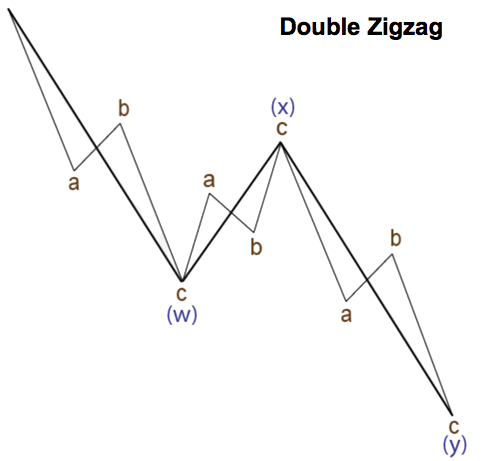
The main rules for Double Zigzags trading
- Double Zigzags subdivide into three waves and labels as W, X, and Y.
- Usually waves W and Y are zigzags.
- Wave X could form any correction pattern.
- Wave X is always smaller than wave W.
- Wave Y is always longer than wave X.
- In most cases, Double Zigzags are a deep correction in relation to the previous price movement.
It’s not easy to recognize a double zigzag in real time. Usually, this pattern forms when the first zigzag is far smaller from the expecting correction, so after a break, the second zigzag arrives. In other words, if the first zigzag isn’t enough to be a correction itself, the second zigzag takes place.
Duration of wave X
Usually, as shown in the chart below, wave X is longer than corrections inside waves W and Y. If a pattern forms in this shape, it’s pretty easy to label it. Remember, we can say that one or another pattern forms only when the whole structure ends. Until then, we should be careful.
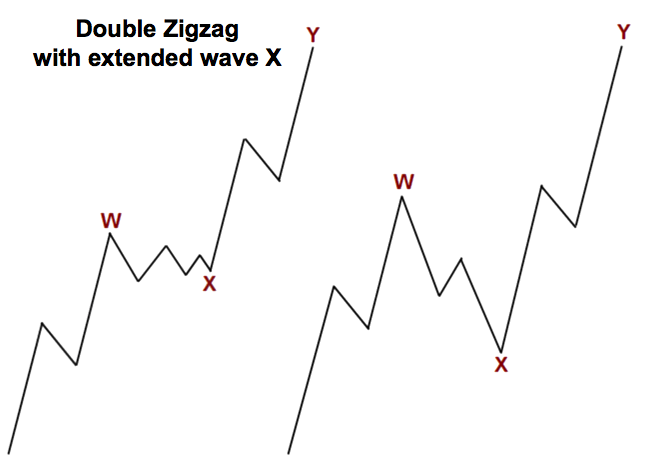
However, sometimes wave X of a double zigzag could be relatively small. In this case, we could count this part of a chart as a single zigzag with extended waves A or C (depending on waves relations because the third wave can’t be the shortest).
Also, if we have a possible count with the longest wave C (this example is on the right on the chart below), we should also consider an option with a developing impulse (in this case wave C turns out to be the third wave). So, it’s safer to have a double zigzag with long wave X (see the chart above), while a wave count with small wave X could also have some alternatives.
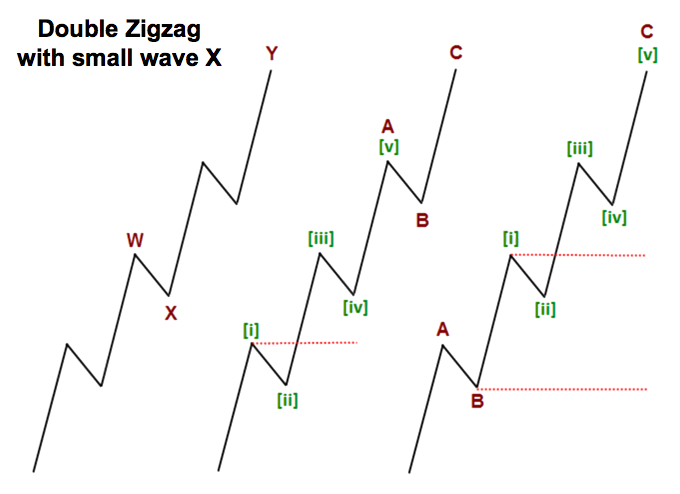
Real examples
Let’s have a look at the chart below. There’s a downward double zigzag with a triangle in wave ((x)) (we’re going to examine this pattern in the next articles). Waves (a) and (c) of waves ((w)) and ((y)) are impulses (sometimes we could face leading or ending diagonals as well). An impulse in wave (i) confirms the ending of the double zigzag.
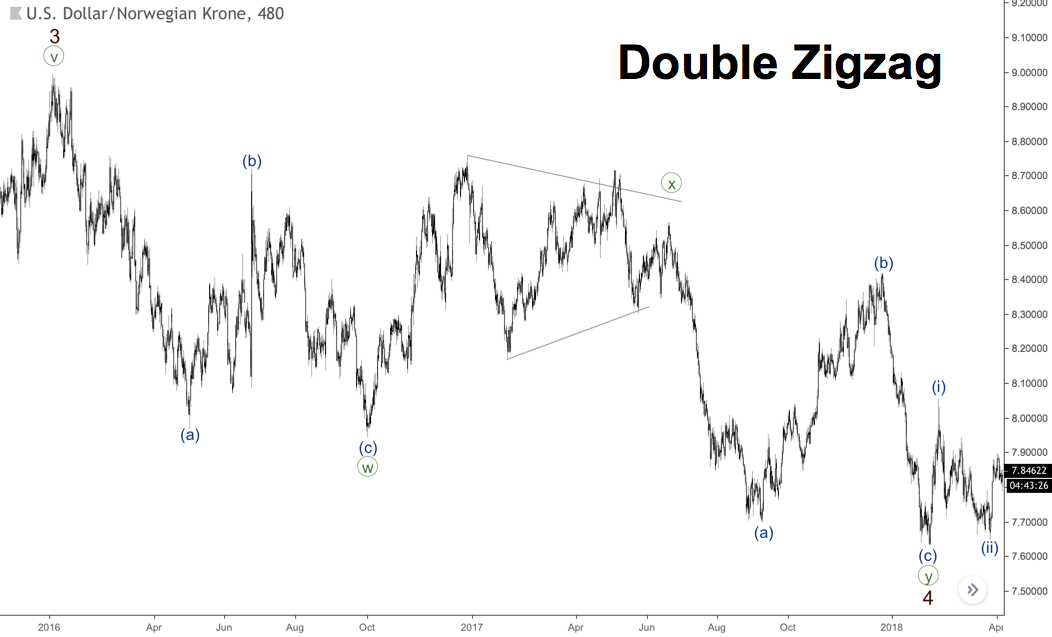
The next chart shows a double zigzag with an extended wave ((X)), so it’s easy to count two zigzags in the motive waves ((W)) and ((Y)), which both have longer waves (A). Also, note that an ending diagonal in wave (C) of ((Y)) highlights the ending of the whole pattern.
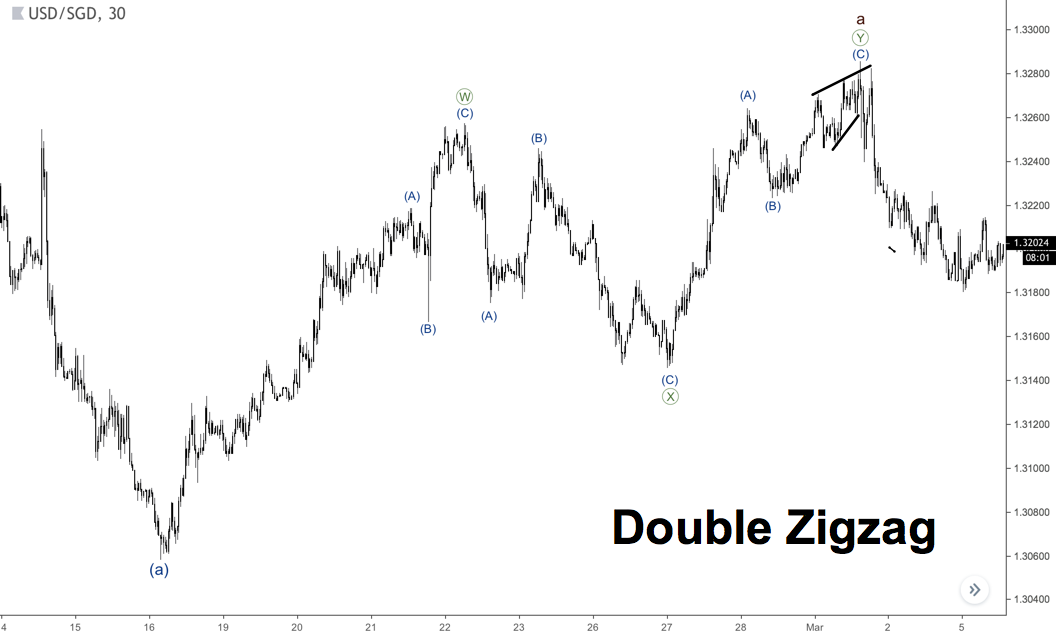
Two more examples of a double zigzag are shown below. There’s a downward pattern with impulses in all motive waves. Also, there’s another double zigzag in wave (x) with a pretty rare combination of diagonals. An ending diagonal in wave ((C)) of (w) is the final wave of the first zigzag and the second one started by wave ((A)) of (y) as a leading diagonal.
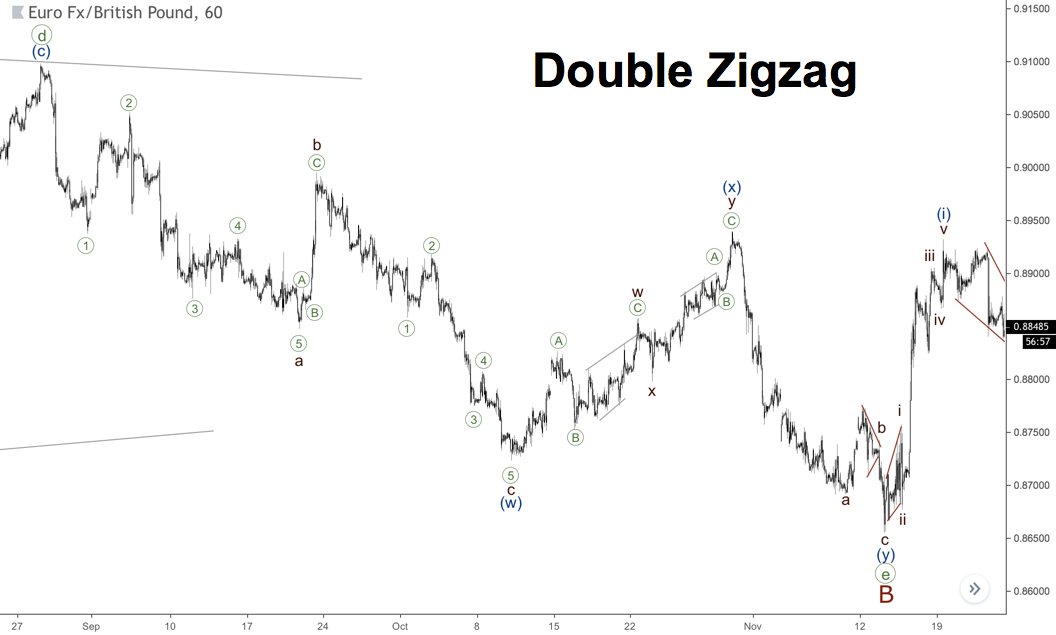
Triple zigzag: display and main trading rules
A pattern with three zigzags in a row calls a triple zigzag. Firstly, they're the main rules for this pattern:
- Double Zigzags subdivide into five waves and labels as W, X, Y, XX, and Z.
- Usually waves W, Y, and Z are zigzags.
- Wave X could form any correction pattern, except triangles.
- Wave XX could form any correction pattern.
- Wave X is always smaller than wave W.
- Wave Y is always longer than wave X.
- Wave XX is always smaller than wave Y.
- Wave Z is always longer than wave XX.
- In most cases, Triple Zigzags are a deep correction in relation to the previous price movement.
As you can see, the main difference from Double Zigzags is that Triple Zigzags consist of five waves as well as impulses and diagonal. However, Triple Zigzags are corrective waves while impulses and diagonal are motive ones.
To be honest, this pattern is rare. Moreover, it’s pretty rare. In this case, we should avoid using this pattern in the real-time wave counting because in most cases we’ll be wrong sooner or later. If you think there’s a Triple Zigzag, the first thing you should do is to check if there’s another wave count possible. More often, a simpler wave count is available.
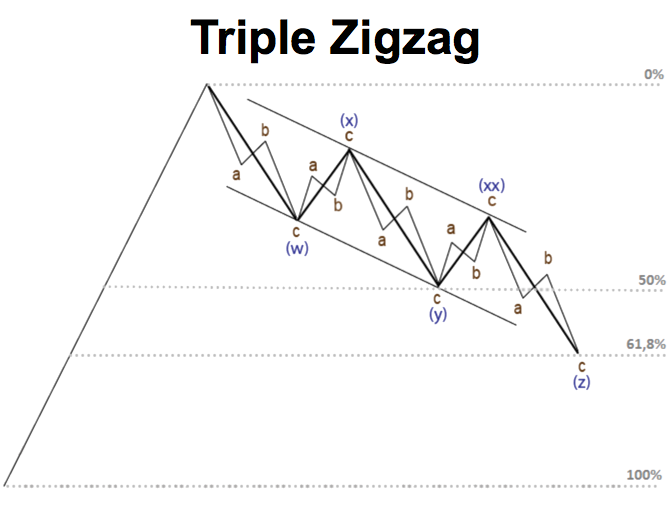
Real example
It’s pretty hard to find an example, but there’s one on the next chart. All motive waves here are zigzags. The first wave X is a zigzag and the second one is a double zigzag. Keep in mind, that the second corrective wave of a triple zigzag could be marked as X or XX.
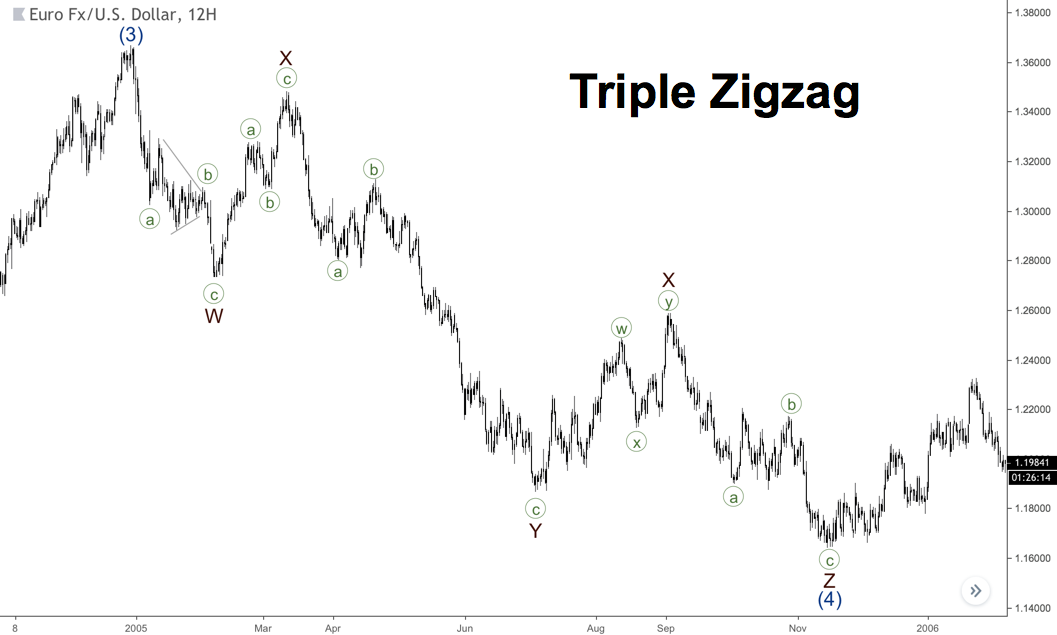








No comments:
Post a Comment